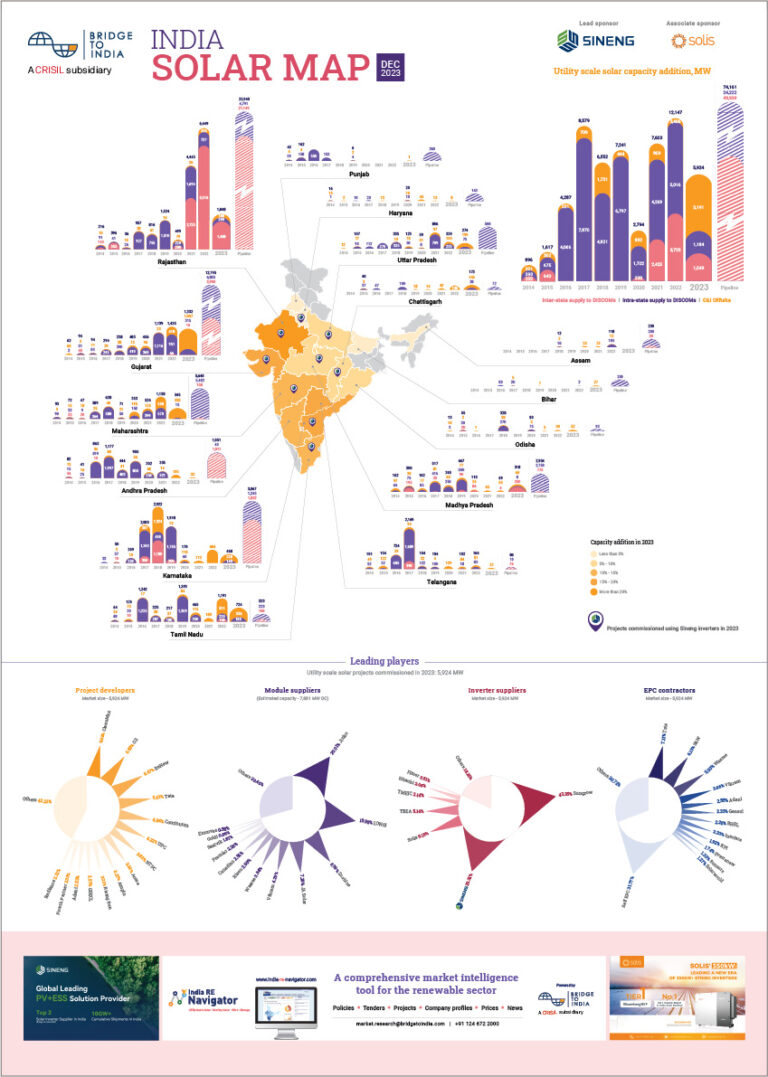This summer has been particularly harsh in North India – both in terms of record temperatures and lack of power. Delhi has seen power cuts ranging from one to five hours daily. During the peak summer season, this is close to living hell. It is therefore no surprise that people are protesting at the situation. The irony however is that the sun shines mercilessly and is largely untapped.
- Delhi’s power shortage is not due to inadequate generation capacity. It is simply because power tariffs are so low that DISCOMs cannot afford to buy expensive peak power in the market
- Power prices are intentionally being kept low to cater to vote bank politics. People do not realize that if they want quality power, they must pay for it
- Delhi and its politicians must adopt a long-term view – which means higher prices in the short-term but a much healthier grid and lower energy costs in the long-term. Rooftop solar can play a vital role
It’s not as if there is a deficit in power generation capacity in the country. India has a total generation capacity of 245 GW and actual peak demand in the summer months does not exceed 150 GW. In the month of April 2014, the peak summer demand stood at 141 GW (Central Electricity Authority, Executive Summary Power Sector April 2014). Why are over 100 GW generation capacities lying idle? The answer is simple: The politics of power pricing and lack of coal supply. A lot has been talked about on India’s inability to meet coal demand, so I limit my discussion to the former – power pricing. Politicians influence the Electricity Regulatory Commissions (ERC) and artificially keep power prices subdued to cater to vote banks. In Delhi, the former Chief Minister Arvind Kejriwal did this during his now famous AK-49 government (it lasted 49 days). During his short tenure in office, Kejriwal slashed power prices without taking into account the consequences, namely that cheaper power means less power. It isn’t just Mr. Kejriwal. Governments across India lower tariffs, typically before elections, to raise them again after elections. Below market rate power prices means that DISCOMs cannot maintain the existing T&D and generation infrastructure and invest in new infrastructure. Nor do DISCOMs want to buy expensive short-term power to make up the deficit, if they can only sell it at a loss. They’d rather sit back and do nothing.
Politicians do not seem to understand that low power prices and 24×7 power supply simply cannot go hand in hand. Quality power has a price. The government cannot endlessly subsidize power. We need a change in mindset. If voters understand that politicians promising cheap power in effect promise them less power, this vicious cycle might be disrupted. Increasingly, it seems, they do. Any change must be systemic and long-term. Yes, in the short-term people will feel the pinch and prices will go up, but in the long-term, this will ensure that the DISCOMs can supply quality power. In the long term, power will get cheaper, if it is supplied through a functioning infrastructure rather than through ad hoc and back-up measures.
There is hope that the new government under Prime Minister Narendra Modi will go in the right direction. He has already demonstrated in the state of Gujarat that if people are given a choice between poor-quality cheap power and more expensive uninterrupted power, they will shift to the latter (see my earlier post here). The challenge for Mr. Modi would be to get the state governments on board – bear the short-term consequences and reap the long-term dividends. Whether long-term solutions will really prevail over election tactics and cheap promises will be demonstrated soon, when Delhi votes for a new government.
If power prices have to be raised, this represents a wonderful opportunity to introduce a significant amount of solar into Delhi’s energy mix. BRIDGE TO INDIA and GREENPEACE have already estimated Delhi’s rooftop potential as more than 2 GW (read the report here) (The current shortfall in Delhi is 400 MW). Solar would be immune to storms (like the one we saw on 30th May 2014) that might destroy crucial transmission lines bringing power into the state. Also, the hotter and brighter the day, greater would be the solar power produced which would keep millions of ACs, coolers and fans running. Yes, rooftop solar power is expensive, but the gap between conventional power and solar power is fast closing. These systems last for 20-25 years with little maintenance and no exposure to fuel price volatility (unlike coal or gas). To give credit where it is due, Delhi has already announced a rooftop solar policy. But political uncertainty (both at the national and state level) has meant that the policy hasn’t gone ahead. This must be fixed immediately so that next summer the sun can be welcomed, not cursed.
Akhilesh Magal is Senior Manager- Consulting at BRIDGE TO INDIA.












